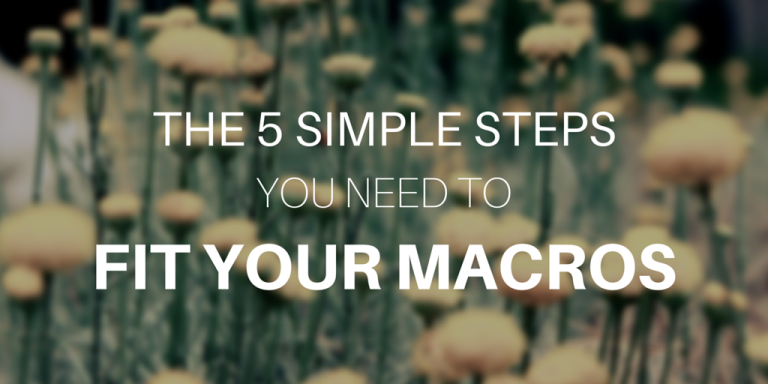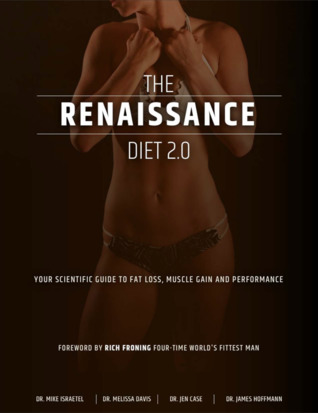A popular approach to weight control is the flexible diet If It Fits Your Macros (IIFYM) – a dietary approach that tries to avoid complexity by focusing only on macronutrients.
We know that adherence to a diet is more important than the diet itself1 and so the simplicity of IIFYM makes it a very useful tool to start taking control of your nutrition.
While this macro-focused approach makes it a whole lot easier to diet – whether to grow or shrink – there are still some gotchas to be aware of. We’ll go through exactly how to set up your own macro split and how to avoid some common pitfalls.
Like most diets, IIFYM will help you lose weight. However, contrary to most diets, it can also help you gain weight, if that’s your cup of tea. Whatever direction you want to go, up or down, there are many reasons why you’d want to control your weight.
You might be trying to grow stronger and would like to add muscles. (This is me!)
Others want to look and feel better in their birthday suit.
Some might have to lose some weight for health reasons.
Yet others need to maintain weight to stay in the weight class they’re competing in.
Let’s see how this is done with a focus on macronutrients.
Macrowhat? #
Macros is an abbreviation for macronutrients and there’s three of them: protein, carbs, and fat.
Protein is the building block for most parts of our bodies. It both helps in growing muscles and retaining them when you’re trying to lose weight.
Carbs is the next fastest source of energy (after creatine) and thus very important for our performance both in the gym and, since our brains run on carbs, at work.
Fat is needed for our nerves and brains to function properly, dissolve vitamins, form hormones, etc, etc. It’s essential for our bodies and shouldn’t be feared.
Calories #
All macronutrients carry with them some energy we can use. This energy is measured in calories (actually kilocalories – kcal – but we’ll use the terms synonymously here).
The amount of calories you absorb from food, minus the calories you burn during the day, is your caloric balance. If this balance is negative (hypocaloric) you’ll lose body mass and if it’s positive (hypercaloric) you’ll gain body mass. It’s really simple.
Except it’s not that simple.
There’s many factors that will modify the amount of calories you absorb and the calories you burn. I’ll touch on this in a later article – don’t miss it by subscribing!
For now just know that you can’t simply look at the calories on the food label, subtract what the treadmill display says, and think that you know your exact caloric balance. It’s a crude estimate.
Finding your macros #
Step 1 – TDEE #
By putting yourself in a positive or negative caloric balance you’ll grow or shrink. That’s why we’ll start by estimating your Total Daily Energy Expenditure (TDEE), the amount of calories you need per day in order to maintain your current weight.
Use our TDEE calculator to find your value. Enter your age, weight, height, and sex. The calculator will then show your estimated calories per day for maintenance.
Enter your numbers above
Let’s use myself for example. I’m a 90 kg male of 31 years, measuring in at 184 cm. I’ll pick the “light” activity category, since I do actually train quite a bit.
This puts me at ~3000 kcal but since I want to grow I’ll add 250 to this number and so I end up with 3250 kcal – that should put me in a positive caloric balance (hypercaloric).
If you wanted to lose weight, you’d instead subtract 250 kcal from this number.
To distribute: 3250 kcal
Step 2 – Protein #
Next we’ll start breaking down these calories into macronutrients – the basis for our IIFYM diet. We’ll begin with the most important: protein. This is not only essential for growing bigger but protein helps retain muscle when losing weight.
As per my article on protein, the recommended amount is around 2 grams per kilo lean body mass. My 90 kg are definitely not all lean body mass, though, so let’s do some math.
For simplicity let’s say I’m at 20% body fat:
20% fat = 80% non-fatThis puts me at 72 kg lean mass:
90 kg * 80% = 72 kg lean body massSo I’d eat ~150 grams of protein per day (rounded up):
72 kg * 2 g = 144 g
Each gram of protein has 4 kcal, which would amount to 600 kcal in my case.
Remaining: 3250 TDEE kcal - 600 protein = 2650 kcal
Confused by all these numbers? Come ask us in our Facebook group or hire one of our coaches to help you out!
Step 3 – Fat #
Next up is fat. It’s the least important one (as long as you get a sufficient amount) but we do it before carbohydrates because it’s easier that way.
Pick anywhere between 15% and 25%, depending on your preference. I tend to prescribe towards the lower ends for myself and my clients, because that leaves more calories for carbs.
Let’s use 20% for our example: 3250 TDEE kcal * 20% = 650 kcal fat.
Each gram of fat is roughly 9 kcal: 650 kcal / 9 = 72 grams
We’ll round that off and say 70 grams of fat per day.
Remaining: 3250 TDEE kcal - 600 protein - 650 fat = 2000 kcal
Step 4 – Carbs #
Finally, we fill out the remaining calories with carbs. They’re the most important source of energy for everything from enduring our tough training sessions to everyday life.
Every gram of carbohydrate is about 4 kcal: 2000 kcal / 4 = 500 grams
Granted, that’s a lot of sweet potato, oats, and banana but all those carbohydrates will help us push hard in the gym and build a lot of muscle.
Result: 150 g protein + 70 g fat + 500 g carbs = 3250 kcal
Steg 5 – Tweak #
Let’s summarize our macros: 150 g protein, 500 g carbs, and 70 g fat.
This, step #5, is the most important one: try these numbers out, see how they work for you, and tweak the macros to fit your lifestyle.
Feeling tired during training? Increase carbs, decrease fat.
Not gaining any weight? Add another 250 to your TDEE.
Have trouble eating so much? Increase fat, decrease carbs.
Measure yourself routinely and see what happens on a weekly basis. If your weight’s not moving in the direction you want it to, you have to tweak your TDEE number for next week.
This is a gradual process and all these numbers are really just rough estimates. Step #5 is all about getting to know ourselves and finding our own values.
A note on the macro split #
Our split is, thus: 600 kcal protein (18%), 2000 kcal carbs (62%), 630 kcal fat (19%).
I’m sure you’ll encounter other recommendations for how to split the macros. Some bros will promote 40:40:20 for protein:carbs:fat, some vegans will push the subpar 80/10/10 split for carbs/protein/fat, and others will have their own favourites.
My reasons for this specific recommendation are simple.
We don’t need more protein to grow at an optimal rate or retain the maximal amount of muscle when losing weight.
While we need fat to dissolve certain vitamins and produce hormones, 15% to 25% is more than enough for that.
Since carbohydrate is such a great source of energy for athletes, most vegan protein comes bundled with some carbs, and so many nutritious veggies are mainly carbohydrates, it makes sense to get the majority of our energy from that macro.
That’s why I recommend a 20:60:20 split for vegan athletes.
Another very important thing to know is that our bodies are incredibly adaptable. If you start to eat a lot of fat and very little carbs, your body will change to use more fat for energy. And vice-versa. Neither fat nor carbs is evil.
Further reading #
Are you interested in delving deeper into this? Here are some books I whole-heartedly recommend!
The Renaissance Diet 2.0: Your Scientific Guide to Fat Loss, Muscle Gain and Performance
I prefer flexible principles over rigid rules, to help me see what’s important and make informed decisions from my own circumstances. Renaissance Diet does exactly that, teaching you exactly how, when, and what to eat for improved performance and a better physique.
You're Not a Caveman, Don't Eat Like One
Should we all go gluten-free? Is the Paleo Diet a surefire solution to weight loss? Are meat and dairy dangerous? With all the nutrition data flying around these days, it’s a wonder we can ever decide what’s for dinner. But amid the chaos of health facts and myths is the central truth that what you eat can make a major difference in the quality of your life.
Fitting your macros #
Now that you’ve found your macros, let’s fit your diet around them. Here’s some examples of where you can look for the three macros in vegan foods:
For protein: soybeans, chickpeas, lentils, black beans, tempeh, peanuts, seitan, tofu, sunflower seeds.
For carbs: Rice, pasta, potatoes, bread, quinoa, oats, and most fruit and berries. The lower their glycemic load the better.
For fat: Avocado, olive oil, coconut cream, peanuts, almond, walnut, cashew, sunflower seeds, tahini, dark chocolate.
just have a look at its nutritional information. Either the label on the package or online, where you can search for “nutrition food” and Google will show you a handy summary.
Example #
Let’s say I’m having chickpeas for lunch. Per 100 g cooked it’s got 2.5 g fat, 11.7 g carbs, and 6.2 g protein. I like to eat a whole can, which is 400 g. Since 400 g is four times as much as 100 g, we need to multiply all macros by four.
So we get:
- Fat:
2.5 * 4 = 10 grams - Carbs:
11.7 * 4 = 46.8 grams - Protein
6.2 * 4 = 24.8 grams
There are loads of fitness apps out there that can keep track of this for you but basically you’d just keep adding up the macros like this. As you prepare your meals during the day you have a look at the tally and see what you need to fit in to reach your goals.
It’ll never ever be 100% on point but IIFYM is a crude tool anyway and we’re only using it for guidance, not absolute measurement. In the end, what we’re after is getting to know our bodies, how they react to what, and how best to fuel them.
Just keep tweaking your macros and you will gradually take more and more control over your weight.




